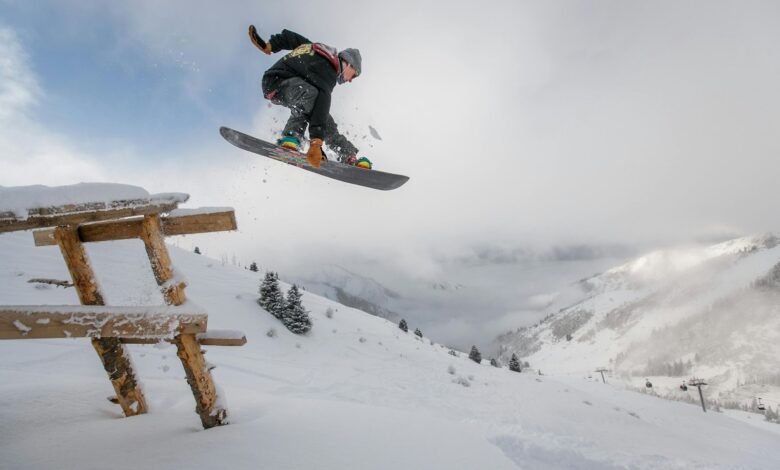Ski Etiquette: Do’s and Don’ts on the Slopes

Skiing is thrilling, but it comes with a code of conduct. Following proper etiquette on the slopes ensures a safe, enjoyable experience for everyone. Whether you’re a beginner or a seasoned skier, knowing the basics of slope manners helps you navigate the mountain confidently. From respecting fellow skiers to understanding the rules around ski equipment rental and lift lines, good etiquette is essential.
Imagine carving down the mountain freely, with everyone following a common set of unwritten rules. It makes skiing more enjoyable and keeps you and others safe. This guide covers the essential do’s and don’ts that will make you a more mindful skier, helping you respect the slopes, people, and the environment. As you prepare for your next trip, keep these simple guidelines in mind—they’ll make your ski day better and improve the experience for everyone around you.
Lift Line and Chairlift Etiquette
Navigating lift lines and chairlifts smoothly is a crucial part of ski etiquette. When entering the lift line, be mindful of the skiers around you. Don’t cut in line, even if it seems like a minor inconvenience. Wait your turn patiently and keep a comfortable distance from others in line. Many resorts have marked lanes or designated queues for different skill levels or group sizes—respect these markers to keep the line moving efficiently. Small actions, like not crowding and staying aware of your place, help everyone get to the top faster and with fewer frustrations.
Once on the chairlift, basic courtesy and safety measures make the ride more enjoyable. Sit still, face forward, and avoid sudden movements that can make others uncomfortable. If you’re riding with someone new to skiing, offer to lower the safety bar or give a quick pointer if needed. And when it’s time to disembark, exit quickly but smoothly to avoid causing pileups or holding up the lift. Simple considerations can make the chairlift ride pleasant and safe for everyone.
Rules of the Slope: Right of Way and Safe Distance
Understanding the rules of the slope, particularly right of way and maintaining a safe distance, is essential for smooth and safe skiing. Skiers in front of you have the right of way; it’s your responsibility to stay in control and avoid them. When approaching from behind, anticipate their movements and allow plenty of room to pass safely. Avoid sudden turns or abrupt stops in high-traffic areas to prevent collisions and maintain a predictable path that other skiers can follow. Following these guidelines keeps the slopes safer and allows everyone to enjoy their time on the mountain.
Maintaining a safe distance is equally crucial, especially when trails become narrow or crowded. Give others enough space to maneuver without feeling pressured or rushed. Skiing too closely to others can cause accidents, so remember that it’s better to slow down and enjoy the run than to push through tight spots. Respecting personal space on the slopes not only shows good manners but also demonstrates skill and control, enhancing everyone’s skiing experience.
Respect for the Environment and Ski Property
Respecting the mountain environment and ski resort property is a key part of responsible skiing. Treat the slopes as you would any natural setting, taking care not to litter or damage the terrain. Small actions, like picking up your trash and not disturbing local wildlife, contribute to preserving the beauty of ski areas for everyone. Most resorts have designated areas for eating and resting; by following these guidelines, you keep the slopes clean and ensure that future visitors can enjoy them. Plus, respecting the land aligns with the spirit of skiing itself, which celebrates the outdoors.
The same level of respect applies to ski resort property, including rental gear and other facilities. When renting items, refer to the ski equipment list provided to ensure you’re returning everything in good condition. Avoid leaving gear unattended on the slopes or in crowded areas, as misplaced equipment can be a hazard. By respecting the mountain and the resort’s resources, you help maintain a positive experience for other skiers and contribute to the sustainability of these beautiful environments.
Communication and Courtesy with Other Skiers
Clear communication and courtesy go a long way in ensuring a safe and enjoyable experience for everyone on the slopes. A simple nod, wave, or eye contact can help signal your intentions, such as passing or merging onto a trail. These non-verbal cues let others know where you’re headed and prevent unnecessary surprises or accidents. Be especially mindful in areas where visibility is limited, as small gestures can prevent misunderstandings and keep everyone in sync. Showing this level of awareness reflects respect for other skiers and creates a more enjoyable, cooperative environment.
Courtesy also means being considerate of different skill levels. If you’re an experienced skier, give beginners ample space and time to navigate the slopes comfortably. Avoid high-speed passes near slower skiers, as this can be intimidating and unsafe for those still building their confidence. Offering a friendly word of encouragement or a helpful tip (when appropriate) can make a big difference, especially for those new to skiing. By being mindful of each other’s experiences, everyone can feel safe and welcomed on the mountain.
Handling Emergencies and Accidents Responsibly
Knowing how to handle emergencies and accidents responsibly is crucial for safe skiing. If you witness an accident on the slopes, stop safely nearby and assess the situation without crowding the injured person. Alert ski patrol if professional help is needed, and be ready to provide information on the location or nature of the incident. Even if you’re a bystander, offering calm support can make a significant difference when help arrives. Staying calm and acting thoughtfully in these moments ensures that those in need get the right assistance quickly.
Basic mountain safety practices, like knowing emergency signals and having a plan, can make all the difference. Familiarize yourself with the resort’s safety protocols, such as trail markings and emergency exits, so you’re prepared for unexpected situations. Always carry essential items like a map, a whistle, and your phone in case of emergencies. Being prepared helps you not only protect yourself but also contributes to the safety and well-being of others on the slopes.
Conclusion
Ski etiquette is essential for creating a safe and enjoyable experience on the slopes for everyone. By following the guidelines outlined in this article—such as respecting lift lines, understanding right of way, preserving the environment, and communicating courteously—you contribute to a culture of safety and consideration among skiers. Remember, skiing is not just about the thrill of the descent; it’s also about fostering a respectful community that values the shared experience. By being mindful of your actions and the needs of others, you enhance your own enjoyment while helping to maintain the beauty and spirit of the mountains. So, as you gear up for your next ski adventure, keep these do’s and don’ts in mind to ensure a fantastic day on the slopes for yourself and everyone around you.




